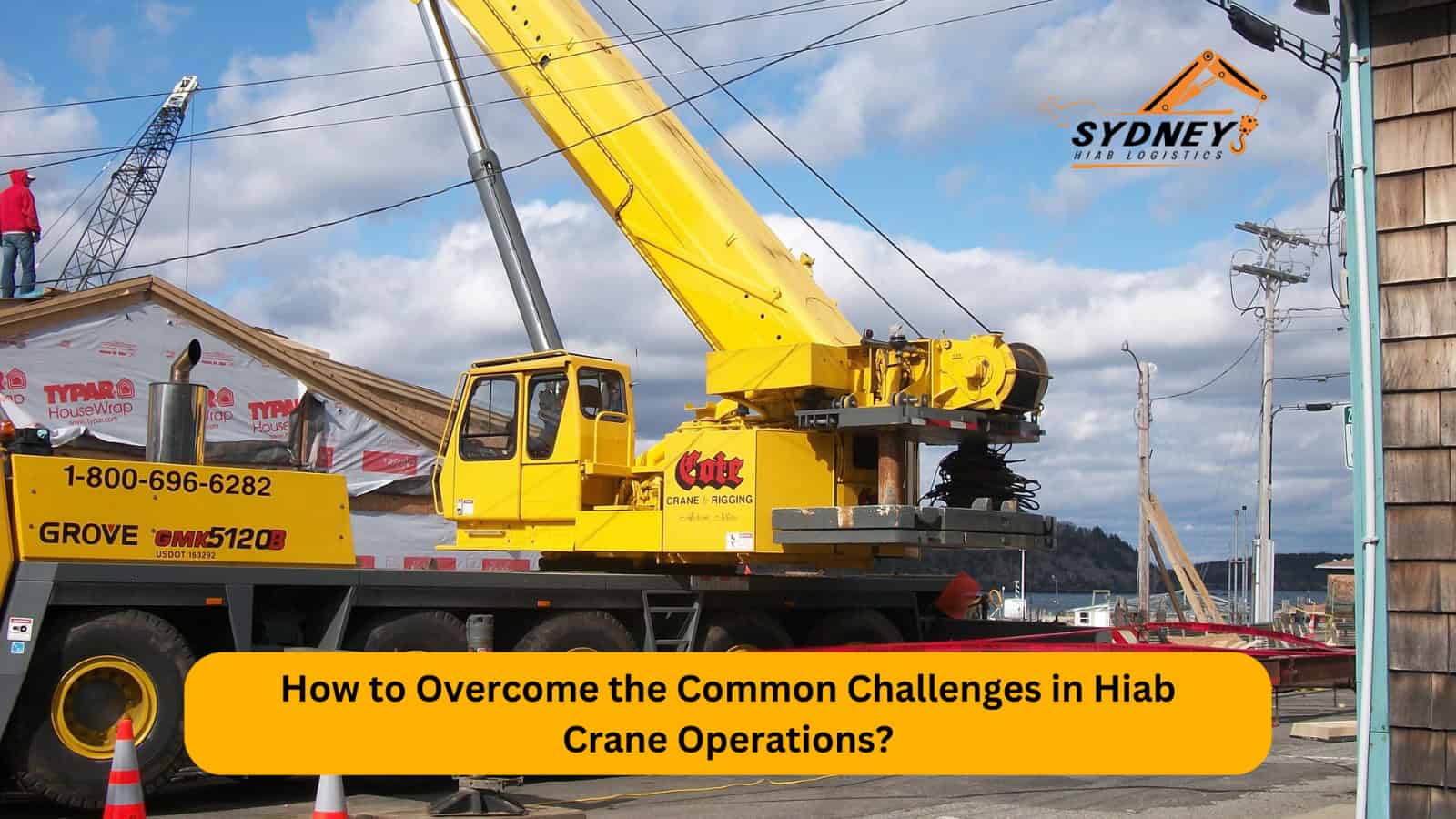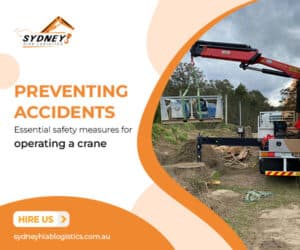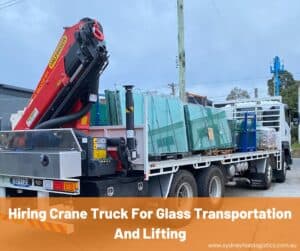Hiab cranes are a type of hydraulic crane commonly used for lifting and transporting heavy loads in various industries such as construction, logistics, and manufacturing. These cranes are equipped with a hydraulic system that allows for precise and efficient lifting and positioning of heavy objects. Hiab cranes are mounted on trucks or trailers, making them highly mobile and versatile for different job sites and applications. In this blog we will know how to Overcome the Common Challenges in Hiab Crane Operations. Let’s’ get started!
Safety Precautions and Protocols for Hiab Crane Operations
Safety is of utmost importance in Hiab crane operations, as the lifting and movement of heavy loads pose significant risks to personnel and property. It is crucial for operators to adhere to strict safety precautions and protocols to prevent accidents and injuries. This includes conducting thorough pre-operational checks of the crane and its components to ensure that everything is in proper working condition. Operators must also be trained to identify potential hazards in the work area and take appropriate measures to mitigate risks.
Furthermore, it is essential for operators to follow proper lifting and rigging procedures to ensure the stability and security of the load. This includes using the appropriate slings, chains, and hooks for the specific type of load being lifted, as well as ensuring that the load is properly balanced and secured. Additionally, operators must be trained to communicate effectively with ground personnel and other workers in the vicinity to coordinate the movement of the load safely. By following safety precautions and protocols, operators can minimize the risk of accidents and ensure the smooth and efficient operation of Hiab cranes.
Proper Training and Certification for Hiab Crane Operators
Proper training and certification are essential for Hiab crane operators to ensure that they have the necessary skills and knowledge to operate the crane safely and effectively. Operators must undergo comprehensive training programs that cover the technical aspects of operating a Hiab crane, as well as the safety protocols and regulations that must be followed. This training should be conducted by qualified instructors who have extensive experience in crane operations and safety.
In addition to training, operators must also obtain the appropriate certification to operate Hiab cranes. This certification serves as a validation of the operator’s competence and ensures that they have met the necessary requirements to operate the crane in a safe and responsible manner. Certification programs typically involve written exams, practical assessments, and ongoing education to ensure that operators stay up to date with the latest industry standards and best practices. By investing in proper training and certification for Hiab crane operators, companies can ensure that their personnel are well-equipped to handle the demands of crane operations safely and efficiently.
Effective Communication and Coordination in Hiab Crane Operations
Effective communication and coordination are essential for the safe and efficient operation of Hiab cranes. Operators must be able to communicate clearly with ground personnel, spotters, and other workers to ensure that everyone is aware of the crane’s movements and the location of the load. This is particularly important in busy work environments where there may be multiple cranes and workers operating in close proximity.
In addition to verbal communication, operators must also be proficient in using hand signals and other non-verbal forms of communication to coordinate the movement of the load. This requires operators to be familiar with standardised hand signals and to ensure that all personnel in the vicinity understand and can respond to these signals appropriately. By maintaining effective communication and coordination, operators can minimise the risk of accidents and ensure that the crane operates smoothly and efficiently.
Managing and Mitigating Risks in Hiab Crane Operations
Managing and mitigating risks is a critical aspect of Hiab crane operations, as the lifting and movement of heavy loads pose inherent dangers to personnel and property. Operators must be trained to identify potential hazards in the work area and take appropriate measures to mitigate these risks. This includes conducting thorough risk assessments before commencing any lifting operations and implementing control measures to minimise the likelihood of accidents.
Furthermore, operators must be vigilant in monitoring the condition of the crane and its components to ensure that everything is in proper working order. This includes conducting regular inspections and maintenance to identify and address any potential issues that could compromise the safety and performance of the crane. By managing and mitigating risks effectively, operators can ensure the safety of personnel and equipment, as well as the smooth and efficient operation of Hiab cranes.
Maintenance and Inspection of Hiab Cranes for Optimal Performance
Proper maintenance and inspection are essential for ensuring the optimal performance and safety of Hiab cranes. Operators must conduct regular inspections of the crane and its components to identify any signs of wear, damage, or malfunction. This includes checking the hydraulic system, controls, rigging equipment, and other critical components to ensure that everything is in proper working condition.
In addition to inspections, operators must also adhere to a strict maintenance schedule to ensure that the crane is kept in optimal working order. This includes regular lubrication of moving parts, replacement of worn or damaged components, and other preventive maintenance measures to extend the lifespan of the crane and minimise the risk of breakdowns. By prioritising maintenance and inspection, operators can ensure that the crane operates at peak performance and remains safe and reliable for use in various job site conditions.
Utilising Technology and Innovation in Hiab Crane Operations
Advancements in technology and innovation have revolutionised the field of Hiab crane operations, offering new tools and solutions to improve the safety, efficiency, and productivity of crane operations. Operators can now benefit from the use of advanced crane control systems, remote monitoring and diagnostics, and other digital solutions to streamline operations and enhance performance.
For example, the integration of digital control systems allows operators to have greater precision and control over the crane’s movements, reducing the risk of accidents and improving the accuracy of load positioning. Additionally, remote monitoring and diagnostics enable operators to track the condition of the crane and its components in real-time, allowing for proactive maintenance and troubleshooting to prevent breakdowns and downtime. By embracing technology and innovation, operators can leverage new tools and solutions to optimise the performance of Hiab cranes and stay ahead of the curve in the ever-evolving field of crane operations.
Adapting to Different Work Environments and Conditions
Hiab crane operators must be able to adapt to different work environments and conditions to effectively carry out lifting and transportation operations. This requires operators to be familiar with the specific challenges and requirements of various job sites, such as construction sites, warehouses, and industrial facilities. Operators must be able to assess the unique characteristics of each work environment and make the necessary adjustments to ensure the safe and efficient operation of the crane.
In addition to adapting to different work environments, operators must also be prepared to handle various weather conditions and other external factors that could impact crane operations. This includes being able to assess the impact of wind, rain, and other environmental factors on the stability and safety of lifting operations, and taking appropriate measures to mitigate these risks. By being adaptable and resourceful, operators can ensure that the crane operates effectively in diverse work environments and conditions.
Maximising Efficiency and Productivity in Hiab Crane Operations
Maximising efficiency and productivity is a key goal in Hiab crane operations, as it allows companies to complete lifting and transportation tasks in a timely and cost-effective manner. Operators must be able to optimise the use of the crane’s capabilities and resources to ensure that operations are carried out efficiently and without unnecessary delays. This includes planning and organising lifting operations to minimise downtime and maximise the crane’s capacity and reach.
Furthermore, operators must be able to identify opportunities for process improvements and implement best practices to streamline operations and enhance productivity. This may involve the use of advanced lifting techniques, the adoption of new technologies, or the implementation of more efficient work processes to achieve better results. By maximising efficiency and productivity, operators can ensure that Hiab crane operations are carried out in a manner that is both effective and economical.
Continuous Improvement and Professional Development in Hiab Crane Operations
Continuous improvement and professional development are essential for Hiab crane operators to stay abreast of the latest industry trends and best practices. Operators must be committed to ongoing education and training to enhance their skills and knowledge in crane operations and safety. This may involve participating in advanced training programs, attending industry conferences and seminars, or pursuing additional certifications to expand their expertise.
Furthermore, operators must be open to feedback and be willing to learn from their experiences to improve their performance on the job. This may involve seeking input from colleagues and supervisors, as well as conducting self-assessments to identify areas for improvement. By embracing a culture of continuous improvement and professional development, operators can ensure that they remain at the forefront of the industry and are well-equipped to handle the demands of Hiab crane operations effectively.
If you’re looking to hire a Hiab crane in Sydney, look no further! Contact us today to access our top-of-the-line Hiab crane rental services. Our expert team is ready to provide you with the right crane for your lifting needs. Get in touch now to make your project a success!



